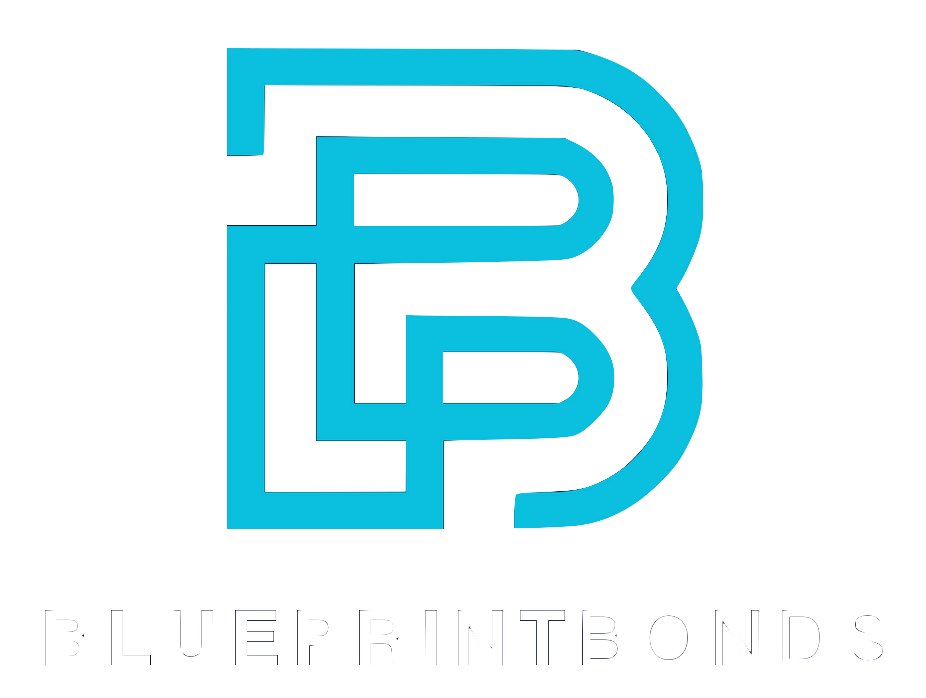In the rapidly advancing world of semiconductor technology, digital bonding has emerged as a cornerstone for innovation, particularly in the realm of hybrid bonding. This technology is revolutionizing how chips are packaged and interconnected, enabling unprecedented performance improvements in everything from artificial intelligence (AI) to quantum computing. As the global hybrid bonding technology market is projected to more than double from $2.5 billion in 2024 to $5.1 billion by 2033, understanding the trajectory of this field is essential for industry stakeholders and technology enthusiasts alike. Market Scope Intelligence highlights this remarkable growth, driven by increasing demand for advanced packaging solutions that push the limits of chip performance and miniaturization.
This article explores the evolution of digital bonding technologies, the key market drivers, recent breakthroughs, and what the future holds for this transformative sector.
Understanding Hybrid Bonding and Its Market Impact
Hybrid bonding refers to a sophisticated semiconductor packaging technique that combines copper-to-copper and oxide-to-oxide bonding at the wafer or die level. This method enables higher density interconnections and improved electrical performance compared to traditional solder-based bonding. The result is a significant leap in chip integration, power efficiency, and speed—critical factors for next-generation devices.
The market for hybrid bonding has become a major investment focus within the semiconductor industry. In 2023 alone, over $2.5 billion was allocated globally toward fab upgrades and equipment purchases specifically targeting hybrid bonding technologies. This surge in investment underscores the strategic importance of hybrid bonding in achieving advanced packaging goals. Market Growth Reports detail how companies are racing to adopt these technologies to maintain competitive advantages in semiconductor manufacturing.
One notable example is Taiwan’s leading foundries, which collectively invested $900 million in 2023 to establish hybrid bonding packaging lines tailored for next-generation AI chips. This significant capital infusion reflects the critical role of hybrid bonding in powering AI workloads that demand high bandwidth and low latency.
Why Hybrid Bonding Matters for Advanced Packaging
Advanced packaging is no longer just about protecting chips; it’s about enabling new functionalities and performance levels. Hybrid bonding facilitates 3D integration, allowing multiple chips to be stacked and interconnected with minimal signal loss and heat generation. This capability is essential for AI accelerators, high-performance computing, and even mobile devices requiring compact but powerful components.
Furthermore, hybrid bonding reduces the complexity and footprint of semiconductor packages, enabling manufacturers to produce smaller, faster, and more energy-efficient devices. As a result, hybrid bonding is becoming a foundational technology for the future of digital electronics. The technology also opens the door to innovative designs that were previously unfeasible, such as integrating disparate technologies like sensors, processors, and memory into a single package. This convergence not only enhances device performance but also streamlines manufacturing processes, making it easier for companies to adapt to rapidly changing market demands.
Moreover, as the Internet of Things (IoT) continues to expand, the need for compact and efficient semiconductor solutions becomes even more pronounced. Hybrid bonding plays a pivotal role in meeting these demands by facilitating the integration of various functionalities into a single chip, thus reducing the overall size and cost of electronic devices. This trend is particularly relevant in sectors such as automotive, healthcare, and consumer electronics, where space and power efficiency are paramount. As industries increasingly rely on smart technologies, the adoption of hybrid bonding is expected to accelerate, further solidifying its position as a game-changing technology in semiconductor packaging.
Technological Innovations Driving the Industry Forward
Recent breakthroughs in bonding platforms have significantly enhanced process efficiency and reliability. In 2023, a leading semiconductor toolmaker introduced a new bonding platform capable of handling both copper-copper and oxide-oxide interfaces simultaneously. This innovation reduced process complexity and equipment downtime by 35%, a game-changer for fabs aiming to increase throughput and reduce costs. Market Growth Reports emphasize the importance of such advancements in meeting the stringent demands of modern semiconductor manufacturing. The ability to manage multiple bonding types concurrently not only simplifies the production line but also opens up new possibilities for device miniaturization and integration, which are crucial in the era of IoT and smart devices.
Another exciting development is the partnership between EV Group (EVG) and Fraunhofer IZM-ASSID, which has been extended to push wafer bonding technologies further, particularly for quantum computing applications. The installation of an EVG850 DB automated laser debonding system at the Center for Advanced CMOS image sensors and Heterointegration Saxony (CEASAX) in Dresden, Germany, marks a significant milestone. This system enables precise and efficient debonding processes critical for the delicate structures in quantum devices. Fortune Business Insights reports that such collaborations are key to accelerating innovation in emerging fields. The implications of these advancements are profound, as they not only enhance the performance of quantum chips but also pave the way for scalable quantum computing solutions that could revolutionize industries ranging from cryptography to drug discovery.
Collaborations and Strategic Alliances
Collaborations between equipment manufacturers and semiconductor firms are accelerating the pace of innovation. For instance, Kulicke & Soffa’s 2023 partnership with TSMT aims to enhance semiconductor packaging solutions by combining their expertise in bonding technologies and manufacturing capabilities. This alliance is expected to streamline production workflows and introduce new packaging architectures that leverage hybrid bonding’s strengths. Fortune Business Insights highlights such partnerships as critical to maintaining technological leadership in a highly competitive market. Additionally, these collaborations often lead to the sharing of intellectual property and best practices, which can significantly reduce the time-to-market for new products. As companies work together to tackle complex challenges, they not only enhance their individual capabilities but also contribute to the overall advancement of the semiconductor ecosystem.
Moreover, the strategic alliances formed between academic institutions and industry leaders are proving to be instrumental in driving research and development. Initiatives that focus on next-generation materials and processes are being fostered through these partnerships, resulting in groundbreaking discoveries that could redefine semiconductor technology. For example, research on advanced materials, such as 2D materials and novel dielectrics, is being accelerated through collaborative efforts, leading to more efficient and powerful semiconductor devices. Such synergies not only enhance the innovation landscape but also ensure that the industry remains at the forefront of technological advancements, ready to meet the challenges of the future.
Market Dynamics and Policy Influence
The semiconductor bonding equipment market, closely tied to the hybrid bonding sector, was valued at approximately $1.5 billion in 2023. It is expected to grow at a compound annual growth rate (CAGR) of around 6.5% through 2028, reflecting steady demand for advanced bonding tools and processes. This growth is fueled by the increasing complexity of semiconductor devices and the need for precision bonding solutions. Global Market Data Insights provides insights into how equipment innovation is keeping pace with packaging trends. As semiconductor technology evolves, the integration of new materials and architectures is pushing the boundaries of traditional bonding methods, necessitating the development of more sophisticated equipment that can handle these innovations efficiently.
Government policies are also playing a pivotal role in shaping the industry’s future. In 2023, the U.S. government enacted a $52 billion funding package aimed at boosting domestic semiconductor manufacturing. This package supports research and development, workforce training, and infrastructure improvements, all of which are critical to advancing bonding technologies and securing supply chains. Ken Research notes that such initiatives will accelerate innovation and production capacity in the semiconductor sector. Furthermore, international collaborations and partnerships are being encouraged, allowing countries to share knowledge and resources, which can lead to breakthroughs in bonding techniques and materials that are essential for next-generation devices.
Implications for the Global Supply Chain
The emphasis on domestic manufacturing and advanced packaging capabilities is reshaping global supply chains. Investments in hybrid bonding equipment and fab upgrades are not only concentrated in Asia but are increasingly distributed across North America and Europe. This geographic diversification helps mitigate risks and supports the development of specialized semiconductor ecosystems tailored to emerging technology demands. As companies adapt to these changes, they are also focusing on sustainability, with many firms exploring eco-friendly materials and processes in bonding technology to reduce their environmental impact. This shift not only aligns with global sustainability goals but also attracts a growing segment of environmentally conscious consumers and investors.
Moreover, the evolving landscape of semiconductor bonding is being influenced by the rise of artificial intelligence and machine learning applications. These technologies are enabling more precise control over the bonding processes, leading to higher yields and improved performance of semiconductor devices. As industries such as automotive, telecommunications, and consumer electronics increasingly rely on advanced semiconductors, the need for robust and efficient bonding solutions becomes even more critical. This trend is likely to drive further investments in research and development, as companies strive to stay competitive in a rapidly changing market.
Future Outlook: Where Is Digital Bonding Headed?
Looking ahead, digital bonding technologies are poised to become even more integral to semiconductor innovation. The projected doubling of the hybrid bonding market by 2033 signals sustained growth driven by the relentless demand for higher performance and miniaturization.
Emerging applications such as quantum computing, AI, and heterogeneous integration will push bonding technologies to new frontiers. The ability to seamlessly bond diverse materials and structures with high precision will unlock capabilities previously thought unattainable. This evolution will not only enhance the performance of existing devices but also pave the way for entirely new classes of technology that can operate at unprecedented speeds and efficiencies.
Key Trends to Watch
One major trend is the continued convergence of bonding techniques, combining copper-copper, oxide-oxide, and laser-assisted debonding into unified platforms that simplify manufacturing and enhance yield. Automation and AI-driven process control will further reduce downtime and improve quality. As these technologies mature, we can expect to see a shift towards more adaptive manufacturing processes that can quickly respond to design changes and market demands, thereby increasing overall flexibility in production.
Additionally, strategic partnerships and government support will remain vital. Companies that invest in collaborative R&D and leverage funding programs will be better positioned to lead the next wave of innovation. This collaborative spirit is essential, as the complexity of modern semiconductor devices requires a multidisciplinary approach that combines expertise from materials science, engineering, and computer science. The establishment of innovation hubs and incubators will also play a crucial role in fostering an ecosystem where startups and established firms can share knowledge and resources, accelerating the pace of technological advancement.
As the semiconductor industry navigates these exciting changes, digital bonding will remain a critical enabler of technological progress, shaping the devices and systems that define the future. The implications of these advancements extend beyond consumer electronics; they will influence industries ranging from automotive to healthcare, where reliable and efficient semiconductor solutions are paramount. The ongoing evolution of digital bonding technologies will thus not only redefine how we interact with technology but also enhance the capabilities of the systems that support our daily lives.
For those interested in following the latest developments, Market Growth Reports and Fortune Business Insights provide comprehensive updates on advancements and market trends in this dynamic field.




